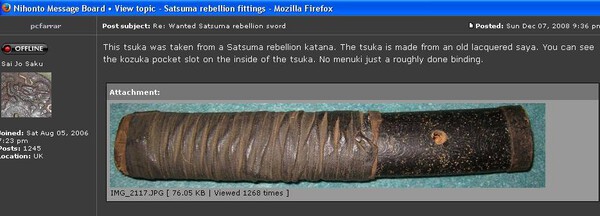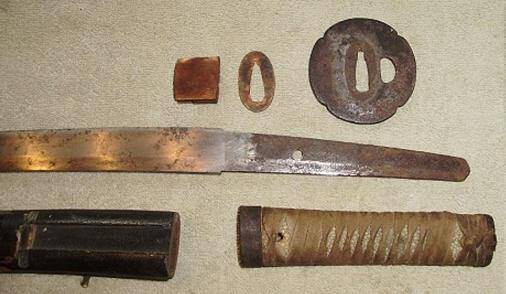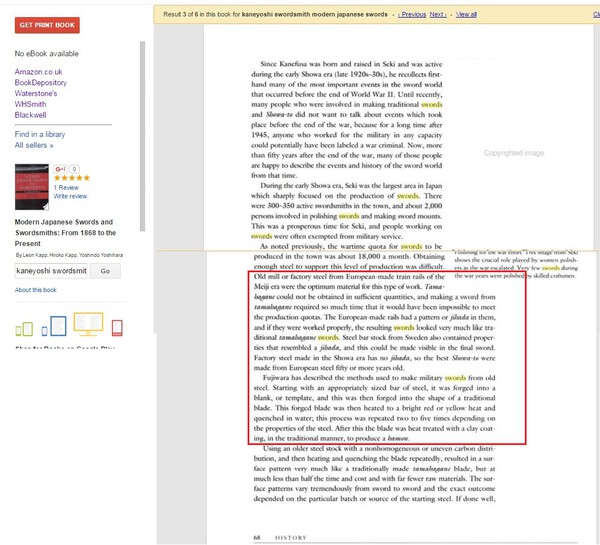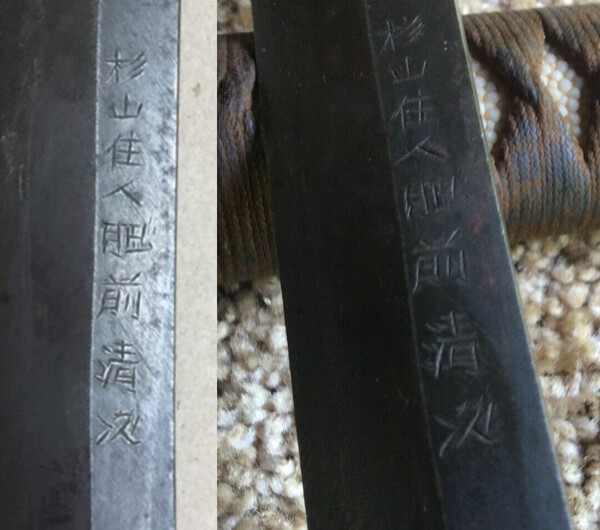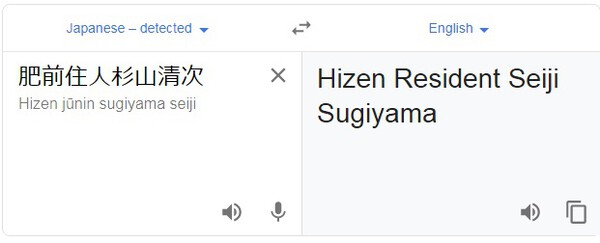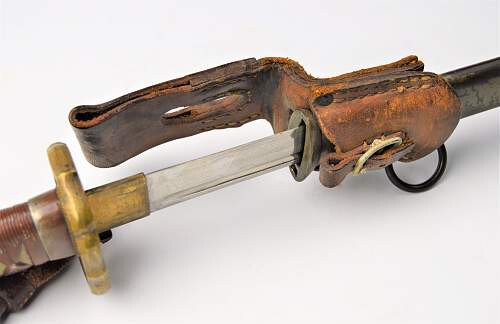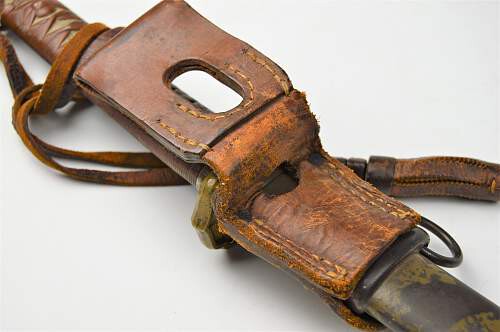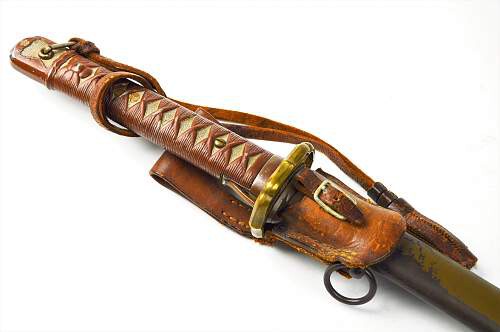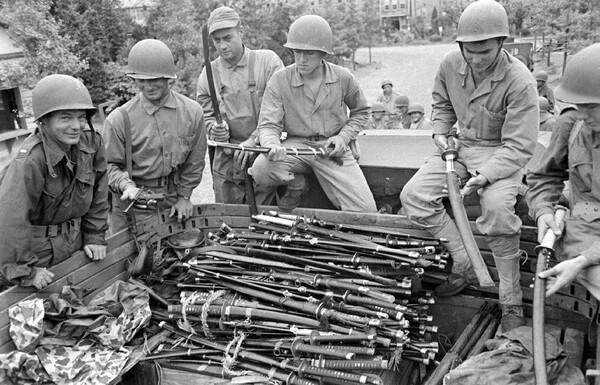-
Posts
1,690 -
Joined
-
Last visited
-
Days Won
11
Everything posted by Dave R
-

Satsuma rebellion swords and Kinnoto
Dave R replied to 16k's topic in General Nihonto Related Discussion
A friend of mine has one, tired blade, tsuka made from a piece of saya, and flattened brass buttons as menuki. They can be really shabby things, I have a couple of tsuka, found in the bits box of a dealer, because they are sometimes stripped refurnished and sold on as better than they were. This one has a decent old tsuka core as a base, but a random kashira/kabutogane held on by the Ito, and not that well anyway. The ito is usually quite well done, not put together by amateurs, but by skilled men working to a price. What confuses the picture are the "cheap" mounts, done for a price but with all proper fittings.... which is what I was trying to sort out in the original thread. The menuki are the rear washers from tobacco pouch mounts. -

Satsuma rebellion swords and Kinnoto
Dave R replied to 16k's topic in General Nihonto Related Discussion
What I was trying to do, was to work towards a workable definition of what these swords actually were, as opposed to the traditional dismissal of them as Rebellion swords, which frankly does not make sense. The "Rebels" had not been disarmed and had no need of shabby improvised swords.... Part two tomorrow. -

Satsuma rebellion swords and Kinnoto
Dave R replied to 16k's topic in General Nihonto Related Discussion
OK, I have my own file on these, so I will repost from that. Not in order, usually with no provenance, so if you see something of yours, sing out and I will remove or credit. (Fair use terms of copyright?). Part one. -

Satsuma rebellion swords and Kinnoto
Dave R replied to 16k's topic in General Nihonto Related Discussion
I have no idea why so many disappeared, but it's probably due my inexperience of posting pics on the site at the time. I have tried correcting it, but with little luck. -

Satsuma rebellion swords and Kinnoto
Dave R replied to 16k's topic in General Nihonto Related Discussion
There is a whole thread on here discussing them... http://www.militaria.co.za/nmb/topic/12723-okashi-to-rebellion-swords/?hl=satsuma&do=findComment&comment=131643 I won't reiterate my thoughts on the subject here, because I go into them in some detail in the thread. -

Type 3 1945 Blade Production, And "hiro" Kanji
Dave R replied to Sugiyama's topic in Military Swords of Japan
Further detail... https://en.wikipedia.org/wiki/Puddling_(metallurgy) -

Type 3 1945 Blade Production, And "hiro" Kanji
Dave R replied to Sugiyama's topic in Military Swords of Japan
An explanation from someone more expert than myself. And part 2 explains the relationship between the two. -
More likely a higher end "desk jockey" or staff with that sword.
-

Type 3 1945 Blade Production, And "hiro" Kanji
Dave R replied to Sugiyama's topic in Military Swords of Japan
It's a commissioned officers sword, and as such a private purchase item rather than issue, and so would not have a serial number. -

Recent Kyu Gunto Purchase. Blade Questions
Dave R replied to MacTheWhopper's topic in Military Swords of Japan
Is that a weld line between the blade and the tang, or just a rough finish? -

Any information on this sword appreciated!
Dave R replied to bwilson's topic in General Nihonto Related Discussion
The wrap is nicely done, but it's not right, and neither is the end knot. -

Modern blade with old looking koshirae
Dave R replied to Alex A's topic in General Nihonto Related Discussion
Old tosugo get recycled all the time. -
That tsuka looks to have shims up both sides, so it's a bit of a refit anyway. One possibility is decayed resin glue within the menuki.
-

Please help Identify Unmarked Short Sword
Dave R replied to Karenfc's topic in Military Swords of Japan
18 inch blade, this is why I suggested it was originally a police sword. -

Please help Identify Unmarked Short Sword
Dave R replied to Karenfc's topic in Military Swords of Japan
Out of service just means it left the national armed forces. On British stuff it means that it is no longer issued, and can be sold to a private purchaser, or to a foreign army even. Basically it means that the goods were not stolen, if found in other hands. http://www.wilkinsonfscollection.com/wilkinsonfscollection.com/The_Broad_Arrow_Including_Ministry_Of_Supply_Markings.html -

Please help Identify Unmarked Short Sword
Dave R replied to Karenfc's topic in Military Swords of Japan
If I remember rightly according to Nick defacing the 'mum just means sold out of the service, like the opposed broad arrows on British issue equipment in the 19th C. -
Is it the same seller though? If so, then something very odd indeed is going on. Bid withdrawn, or seller ending the auction.... But it is the same sword, with different photo's.
-
I found this one odd as well. The blade if a Showato or fake would be illegal in Japan anyway, so a deliberately "joke" Mei would be redundant, and if a Nihonto the fake Mei would be a silly disfigurement, so I think it was not done in Japan. I think that the blade is way better than China-quality, and the copper habaki is a clue to it being kosher, most China fakes have cast brass habaki. I think a non Japanese vendor has slapped the "Mei" on, copying a signature without any clue as to what it meant, and spoiled a decent Shin Gunto. The price it went for reflects the issues that buyers had with it, pretty much the price that a good Koshirae goes for with a Hon-Tsunagi. Google translate gave me this
-

Please help Identify Unmarked Short Sword
Dave R replied to Karenfc's topic in Military Swords of Japan
Police Wakizashi? -
NCO, possibly Shanghai. I see a lot of short "Gunto" usually wakizashi in improvised militarised mounts both in pic's and on dealers tables. Too many to share in fact. This full size one I find interesting, because it is carried the way the one is in the photo above. Converted bayonet frog or purpose made.These photo's were posted by Geoff Ward some time back but I am not finding the original thread to link to, but here they are anyway.
-
Lovely condition, perhaps a bit too .......
-
I see plenty of Kyu Gunto with the NLF, and the oddest selection of swords which look neither one thing or the other in the famous surrender photo, but I have no memory of radiate tsuba and very rarely double haikan.... This could easily be a result of research bias on my part though. Happy to be shown an example though of a Kai Gunto worn by the above.
-
I could be wrong, but I have no memory of ever having seen a Kai Gunto carried by any pilot, or Naval Landing personnel either, in any of my photo's.
-
Just a thought, but if you were going into a so called Banzai charge, would it not be likely that the saya was cast aside once the sword was drawn. They are heavy things and do get in the way.
-
I think you may very well be right. The metal parts are OK, so I think we are looking at an abandoned repair using new wood and Same. There might be holes under the Same and given the state of the Ito it might as well be stripped off so we can get a better look at what is there.








